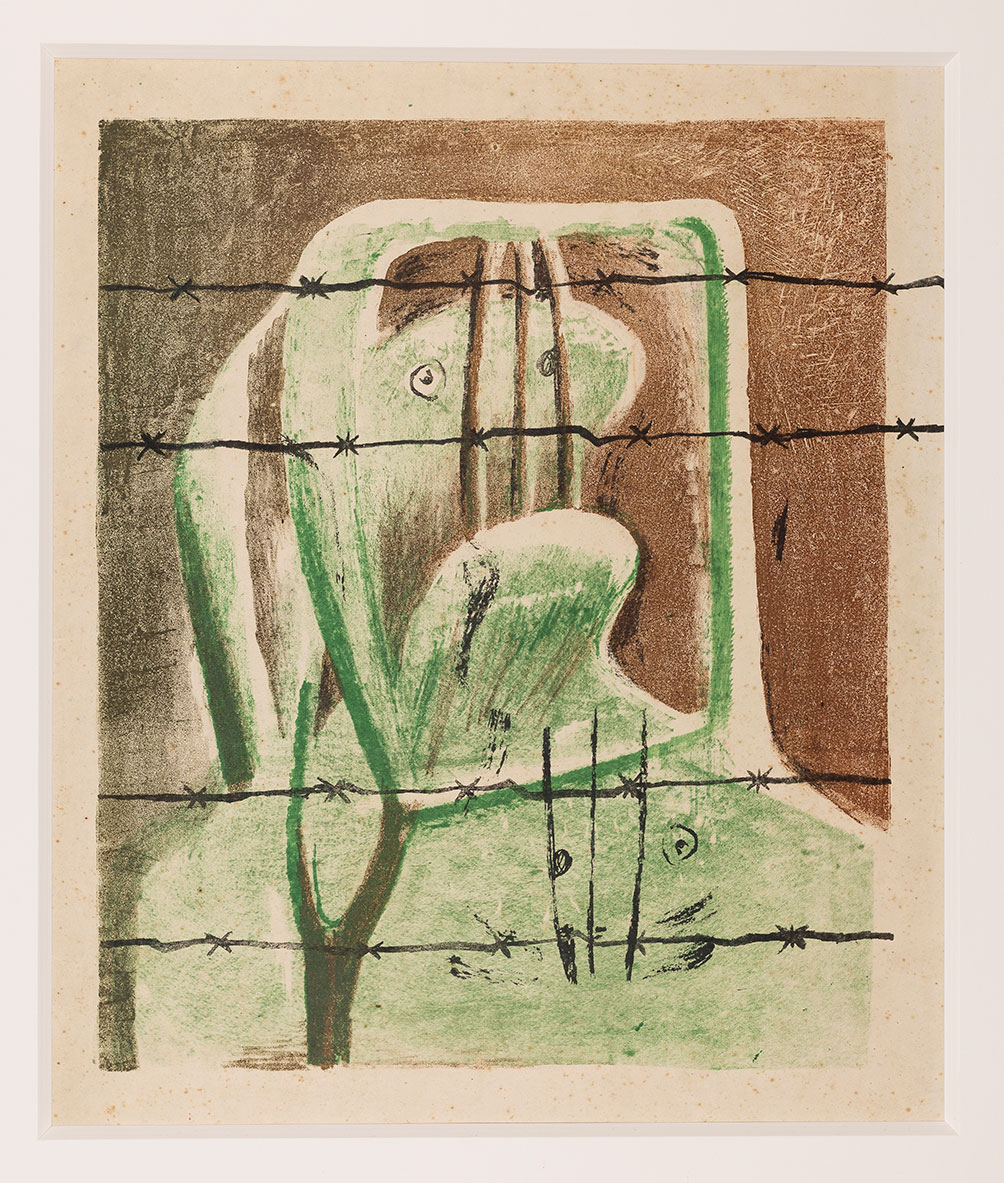The exhibition
Henry Moore: The Helmet Heads is open at the Wallace Collection, London until 23 June 2019.
The exhibition provides a unique and exciting perspective on Moore’s work by assembling, for the first time ever, the entire series of artworks alongside the helmets and armour that first inspired them. “Even Moore himself would never have seen them like this” says exhibition curator, Hannah Higham.
It is believed that Moore first began visiting the Wallace Collection’s armouries as early as the 1920s, and alongside the Helmet Heads themselves, the exhibition also features several drawings, lithographs and a sketchbook dated 1935, which is the earliest evidence of Moore specifically looking at helmets.
- Discover the exhibition
- Discover our Henry Moore image collection
Thoughts from Hannah Higham, co-exhibition curator
We asked Hannah Higham, co-curator of Henry Moore: The Helmet Heads, some questions about this ground-breaking exhibition.
Moore’s fascination with armour
“Moore looked at helmets not only as functional objects but as sculptural forms. He recognised that their makers were not just interested in protecting the human head, but in creating images of beauty and power. Moore sought to do the same in his work. Armour is essentially an augmentation of the human body – it is a hard exoskeleton which protects something vulnerable inside.”
Moore used the physicality of a helmet to explore his ideas on internal and external forms. Within the museum space, the shadowy empty openings of these helmets are perfectly emblematic of Moore’s internal v. external fascination.
Moore and war
Moore’s Helmet Heads series was initially conceived at a time of impending war. The result is a palpable sense of foreboding which is reflected in his work.
As Higham comments, “[throughout a career] punctuated by war, conflict and nuclear threat, Moore reverts to the language of military sculpture - the helmet - to reflect an anxiety about the political situation felt both personally and in wider society.”
Indeed, having fought in the First World War, Moore felt acutely the omens of the second. Associating himself with the politically engaged Surrealists, he helped campaign for intervention in the Spanish Civil War. Unfortunately, the Second World War was to start shortly after the Civil War’s end.
The rest of his career
The Helmet Heads’ principle exploration of exterior protecting interior is a motif that repeats itself throughout Moore’s career. It can be seen projected throughout other great themes of his, including shells, nature, the reclining figure and mother and child.
The principles learnt from these pieces of armour can be seen in other works throughout the exhibition. For example, Higham describes how “Upright Internal/External Form appears both womb-like and evokes the shape of seed pods or the stamen of flowers. When seen alongside Moore’s drawings inspired by armour, we realise its basis is an elongated helmet.”
If Moore’s drawings enthral you, an exhibition titled Henry Moore Drawings: The Art of Seeing is on until 27 October 2019 at the Henry Moore Studios and Gardens. Featuring over a hundred examples of drawings from throughout his career, this is well worth a visit from any Moore fan.
Browse Henry Moore’s pioneering sculptures here.



About the artist
Henry Moore was an internationally acclaimed and pioneering British sculptor and draughtsman, whose work came to symbolise post-war modernism.
About Artimage
Strong relationships with our artists allow us to provide exceptional modern and contemporary art images for you to license and reproduce, while directly supporting the work and livelihoods of those who create them.
Use Henry Moore images in your creative projects.
About the Wallace Collection
The Wallace Collection was built over the 18th and 19th centuries by the Marquesses of Hertford and Sir Richard Wallace. Full of paintings, sculpture, furniture, arms and armour, in 1897 it was transferred to public ownership and left to the British Nation.
About the Henry Moore Foundation
The Henry Moore Foundation was founded by the artist and his family in 1977 to encourage public appreciation of the visual arts. They support innovative sculpture projects while preserving the legacy of Moore himself: one of the great sculptors of the 20th century.
With special thanks to Rebecca Land from the Henry Moore Foundation and the exhibition’s co-curator, Dr Hannah Higham, who helped us research this piece.
Images: Helmet Head No.3, 1960 © The Henry Moore Foundation. All Rights Reserved, DACS/Artimage 2019. Image: © Arts Council Collection, Southbank Centre; Maquette for Helmet Head No.6, 1975. The Henry Moore Foundation: gift of the artist 1977. Reproduced by permission of the Henry Moore Foundation © The Henry Moore Foundation. Photographed by Nigel Moore; Sallet, Unknown Artist / Maker, Milan, Italy, Date: c. 1455 © The Wallace Collection; Spanish Prisoner, 1939. The Henry Moore Foundation. Reproduced by permission of the Henry Moore Foundation © The Henry Moore Foundation. Photographed by Sarah Mercer.

